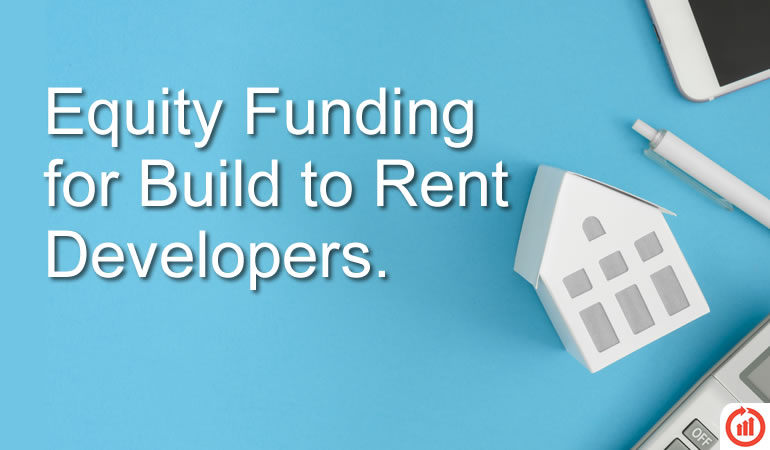Equity Funding for Build to Rent Developers

Equity funding plays a pivotal role in helping Build-to-Rent (BTR) developers bring large-scale projects to life. Instead of relying solely on debt finance, equity partnerships allow investors to share ownership and participate in the project’s long-term success.
For developers, this model can unlock higher-value schemes, improve cash flow, and align funding with the steady rental income BTR generates. In this article, we explore how equity funding works, its benefits and challenges, and how it fits into today’s BTR finance landscape.
What Equity Funding Means in a Build to Rent Context
In property development, equity funding refers to raising capital from investors who take a percentage stake in the project rather than providing a loan.
In Build-to-Rent, this might mean partnering with private investors, family offices, or institutional funds that are drawn to the sector’s stable, recurring returns. Unlike traditional build-to-sell models, equity backers in BTR often have a longer-term interest, seeking a share of ongoing rental yields or future asset appreciation.
This structure can reduce debt reliance, lower leverage risk, and make a development more attractive to senior lenders when you do require bridging or development finance alongside it.
Why Developers Use Equity Funding
Many BTR developers turn to equity partners for one of three reasons:
- To strengthen their balance sheet – Equity can reduce loan-to-cost ratios and unlock more favourable lending terms.
- To scale faster – Sharing equity allows developers to take on multiple projects simultaneously without overstretching capital.
- To bring in strategic partners – Investors often bring experience, networks, and management input that complement the developer’s skills.
For example, a Glasgow-based developer building 40 mid-market rental apartments might work with an investor contributing 30% of total project costs in exchange for an equity stake and share of net rental income.
Benefits of Equity Funding for Build to Rent
No monthly interest payments: Capital is repaid through profit share or ownership value rather than regular servicing costs.
Improved lender confidence: Strong equity backing signals lower project risk to senior lenders.
Enhanced flexibility: Developers can tailor equity terms to align with project timelines or future refinancing strategies.
Potential for repeat partnerships: Successful collaborations often lead to future schemes, creating a trusted funding pipeline.
Challenges and Considerations
While equity funding offers clear advantages, it also requires careful structuring:
Dilution of control: Investors become co-owners, meaning strategic decisions must be agreed collectively.
Profit sharing: Returns are shared, reducing the developer’s total profit margin per scheme.
Exit alignment: Both parties must agree on when and how to realise their investment — whether to sell, refinance, or retain as an income asset.
Legal agreements should clearly define profit waterfalls, management responsibilities, and exit routes to avoid future disputes.
How Brokers Support Equity Funding for Build to Rent Projects
As an experienced intermediary, a specialist broker such as Evolve Finance can help structure mixed funding solutions that combine equity with senior or mezzanine finance. This blended approach allows developers to retain momentum without over-leveraging debt. We can also connect clients with reputable equity partners seeking exposure to Scottish or UK-wide BTR opportunities.
Example Scenario
A Manchester-based developer plans a 60-unit Build-to-Rent block valued at £12 million. By securing 35% of total costs (£4.2 million) from equity investors, they reduce senior borrowing to 55% LTC. The result: lower monthly interest, improved cash flow, and increased lender confidence. Once stabilised, the asset is refinanced with a long-term BTL portfolio facility, allowing both parties to extract equity and recycle funds into the next project.
You may also like our article on Joint Venture Funding in Build-to-Rent, which explores how partnership models can complement equity strategies.
Conclusion
Equity funding has become a cornerstone of successful Build-to-Rent delivery across the UK, offering a flexible, partnership-based path to growth. It works particularly well for developers who prioritise sustainable, recurring income models over one-off sales.
If you’d like to explore how equity investment could enhance your next scheme, speak to our team at Evolve Finance.
For a deeper look at funding options for Build-to-Rent projects, see our guide to financing a Build to Rent development.